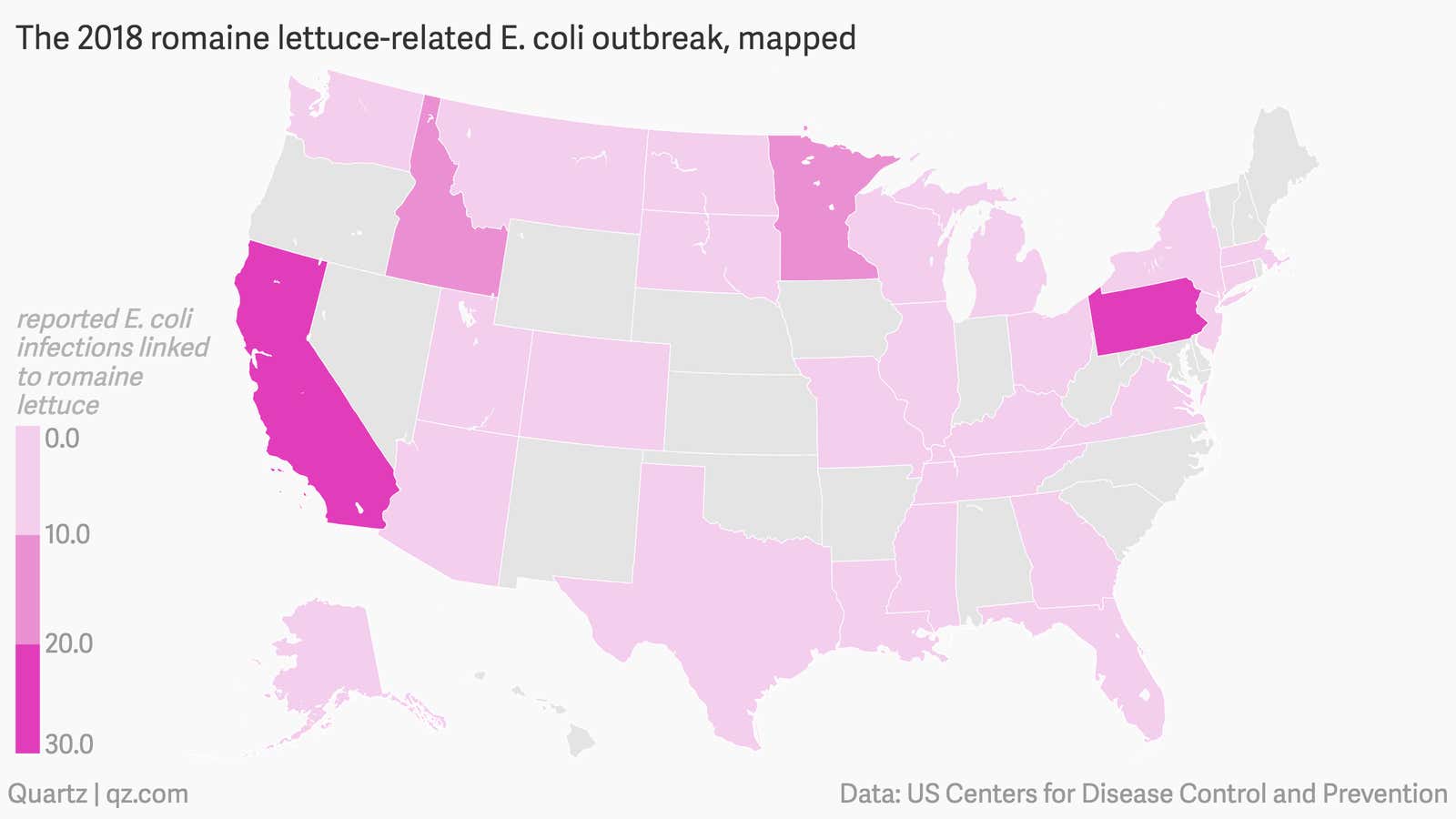If you’re living in the US, it’s a good time to get on the kale train.
A month ago, the US Centers for Disease Control (CDC) reported it was investigating 17 cases of E. coli food poisoning in seven states linked partly to romaine lettuce from a farm near Yuma, Arizona. Since then, there have been an additional 132 cases and one death that have been reported in 22 more states, making this worst E. coli outbreak since 2006, when 205 people became sick and five died from contaminated baby spinach (paywall).
Of the 29 states with confirmed romaine-related cases, California has the most, with 30 reported ill, followed by Pennsylvania with 20. The outbreak has even reached a Alaska, where according to the Washington Post (paywall), a prison inmate fell ill. At this time, the CDC recommends that consumers should take steps to ensure that their romaine lettuce is not from Yuma, though the watchdog group Consumer Reports recommends avoiding this particular green entirely.
E. coli is a type of bacteria commonly found in our guts; only certain strains are known to cause illness. In this case, the culprit is a strain of E. coli referred to by its number O157:H7, and which can cause severe gastrointestinal problems and kidney failure.
As Quartz’ Chase Purdy has previously noted, tracking outbreaks of food-borne illness is particularly tricky because there’s a reporting problem. Even if a person becomes sick enough to visit a hospital and get the lab tests to confirm the cause is a particular pathogen, it’s hard to pinpoint exactly what they ate that caused them to get sick. Then, even if a source is identified, it’s not always clear where the food (paywall) originally picked up the bacteria. It could be that crops were watered from a contaminated source, or that farmers didn’t wash their hands after handling manure.
Officials at the CDC, the US Food and Drug Administration, and various state health departments are still trying to pinpoint the contamination source for the shipments of lettuce outside the Yuma, Arizona region. Even if they do find the source of the problem, there will likely be more cases added to the tally of the E. coli outbreak due to a lag between a person visiting the hospital and their case being reported to health officials.
